COLUMBUS, Ohio — Late last year, Manny Delaveris fell into a rut. He couldn’t shake his pessimism or stop worrying. His brain felt dark, all the time. It wasn’t that different from how he felt back when he was still using painkillers and heroin: empty.
Delaveris had been sober for a year following several stints in rehab, and he was on his way to making the dean’s list at Ohio State University. Yet he found himself tuning out at support group meetings and going out back to smoke cigarettes.
Then he ran into a friend he used to get high with.
“I said, ‘Fuck it. Let’s do it,’” Delaveris, 27, recalled. “I just felt so shitty. And I really thought it was going to be this quick, little, like, I’ll just do this, get it out of my system” — he snapped his fingers — “and get sober again right away. And it just was not that easy.”
For the next six months, Delaveris woke up nearly every day planning to stay sober. But after heading to classes in the morning, he’d find himself unable to think of anything else — until, finally, he would drive off-campus to buy painkillers from an acquaintance, and, because he couldn’t wait, use them on his way home. Then he’d spend the rest of the day in his room alone, watching YouTube videos on astrophysics or listening to One Direction.
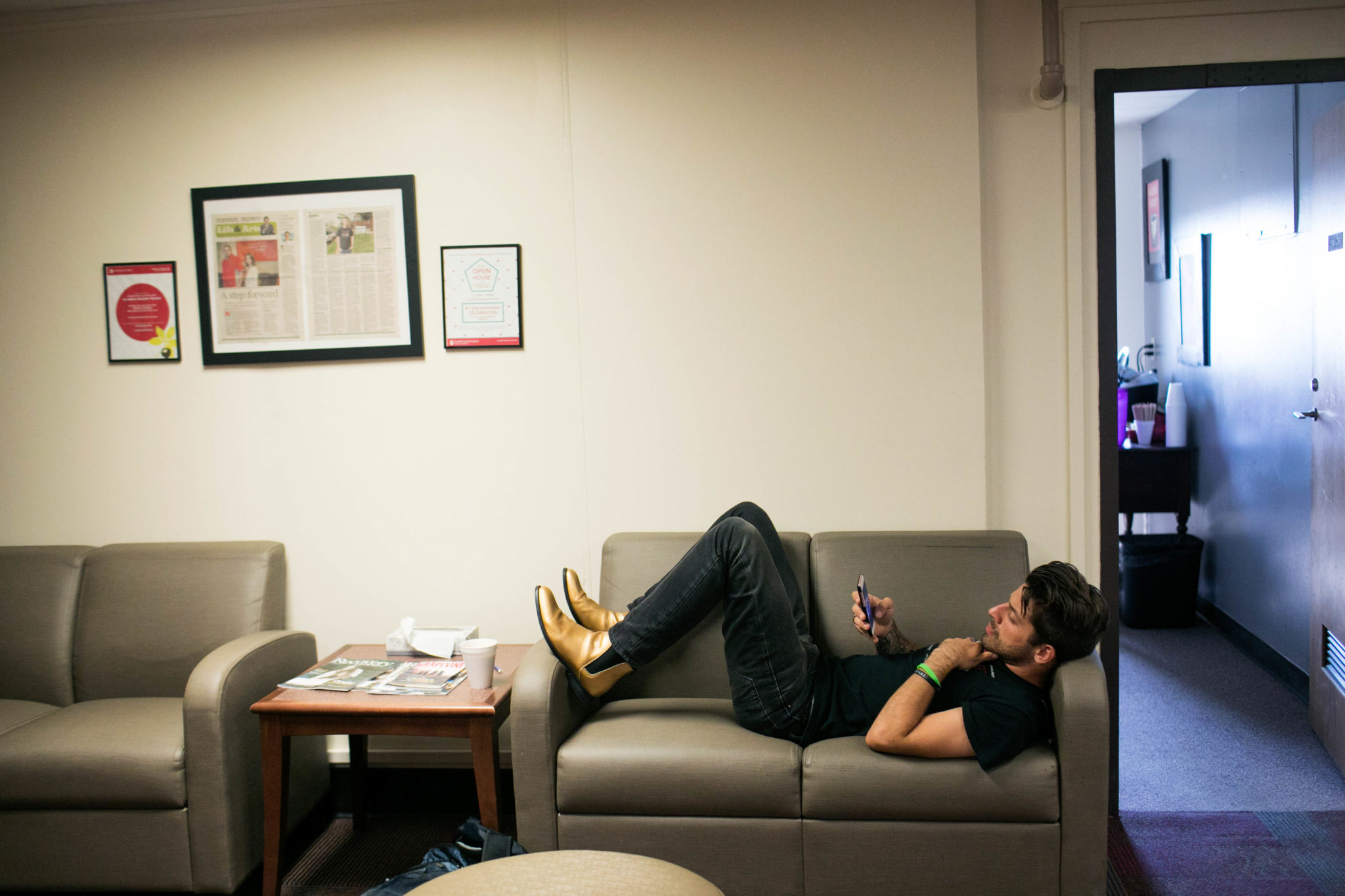
“When I’d look at kids walking through campus, I would think to myself, ‘These kids wouldn’t last two minutes in my world. I do better than them in class and I get high,’” he said. “I didn’t know anybody else doing what I was doing, so I kind of used that to make myself feel better.”
The worsening opioid epidemic, which killed nearly 3,200 Americans under 25 in 2015, is drawing attention to the lack of help available to college students battling addiction. Campus has never been particularly friendly to sobriety, and students in recovery from drug and alcohol use have been overwhelmingly left to struggle on their own with a potentially deadly habit.
Yet that might be changing. After decades of ignorance, indifference, or resistance to the idea, programs that support students in recovery are popping up at schools all over the country. In 2013, there were just a couple dozen “collegiate recovery” programs — today, there are 186, according to Transforming Youth Recovery, a nonprofit dedicated to expanding resources for young people in recovery. Some colleges are even beginning to offer medication-assisted treatment to students, weaning them off opioids with the help of drugs like buprenorphine.
There’s scant data on college students with addictions to opioids or other drugs, since these students often leave school without telling officials why. But we do know that for the past decade, people younger than 25 have accounted for between 10 and 12 percent of all fatal opioid-linked overdoses — and that, after years of decline, such overdoses among kids ages 15 to 19 have spiked.
“We owe it to our students to have something for them when they come back from treatment,” said Matt Statman, the manager of the collegiate recovery program at the University of Michigan. “We’re setting them up for failure if we just send them off to treatment and then when they come back, we say, ‘Here’s an AA book. Have a nice day.’”
Delaveris is one of the lucky ones — he belonged to Ohio State University’s Collegiate Recovery Community, which offers a home to students struggling to stay sober. When he finally broke down and asked the program’s managers for help, “They were nothing but supportive,” he said. They helped him get into treatment and, he says, saved his life.
Looking for help
Collegiate recovery programs have been around since the ’70s, but for decades, advocates say, the stigma and lack of understanding surrounding addiction kept most school officials from starting one. Money is always scarce in higher education, and administrators didn’t necessarily want to take a chance on a potentially controversial program.
Christopher Hart, a consultant who works with Transforming Youth Recovery, summarized the longtime attitude among administrators as, “We don’t want to take the college tour of prospective parents by the location where students in recovery are gathering.”
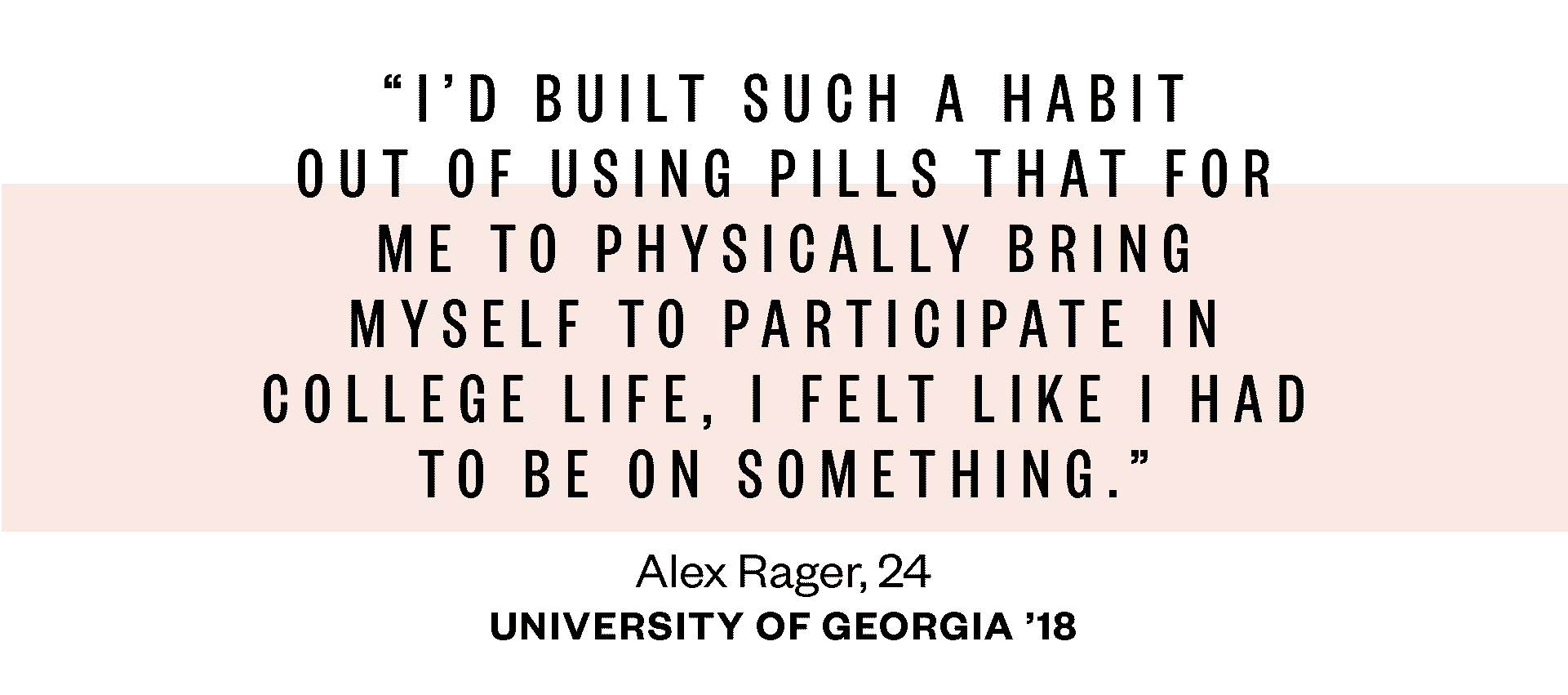
Yet getting sober on campus can be uniquely challenging. Recovery researchers call college an “abstinence-hostile environment,” since it’s often seen as a consequence-free, “Animal House”–like oasis that revolves around finding the next party.
Nearly a third of full-time college students surveyed by the University of Michigan in 2015 said they’d had five or more drinks in a row, which qualifies as binge-drinking, at least once in the last two weeks. Other popular drugs include marijuana and stimulants, such as the ADHD drugs Adderall and Ritalin. About 3 percent of surveyed college students also said they’d used OxyContin, Vicodin, or Percocet without a doctor’s permission sometime during the past year.
“If I’m in a business class and the person sitting next to me is talking about who they can buy Adderall from, it’s very easy as a college student to say, ‘Hey, I’m actually looking for some of that too. Can you hook me up?’” said Alex Rager, 24, a University of Georgia student who’s in recovery from his addiction to stimulants. “There’s such a calm, collective, and kind of no-questions-asked culture.”
Brendan Saloner, who studies substance use treatment among young people at Johns Hopkins Bloomberg School of Public Health, said the general lack of collegiate recovery options is symptomatic of a broader problem. “We don’t have the infrastructure set up to really help anyone in most places. It’s sort of a bleak world,” he said. “People are desperate, and understandably so.”
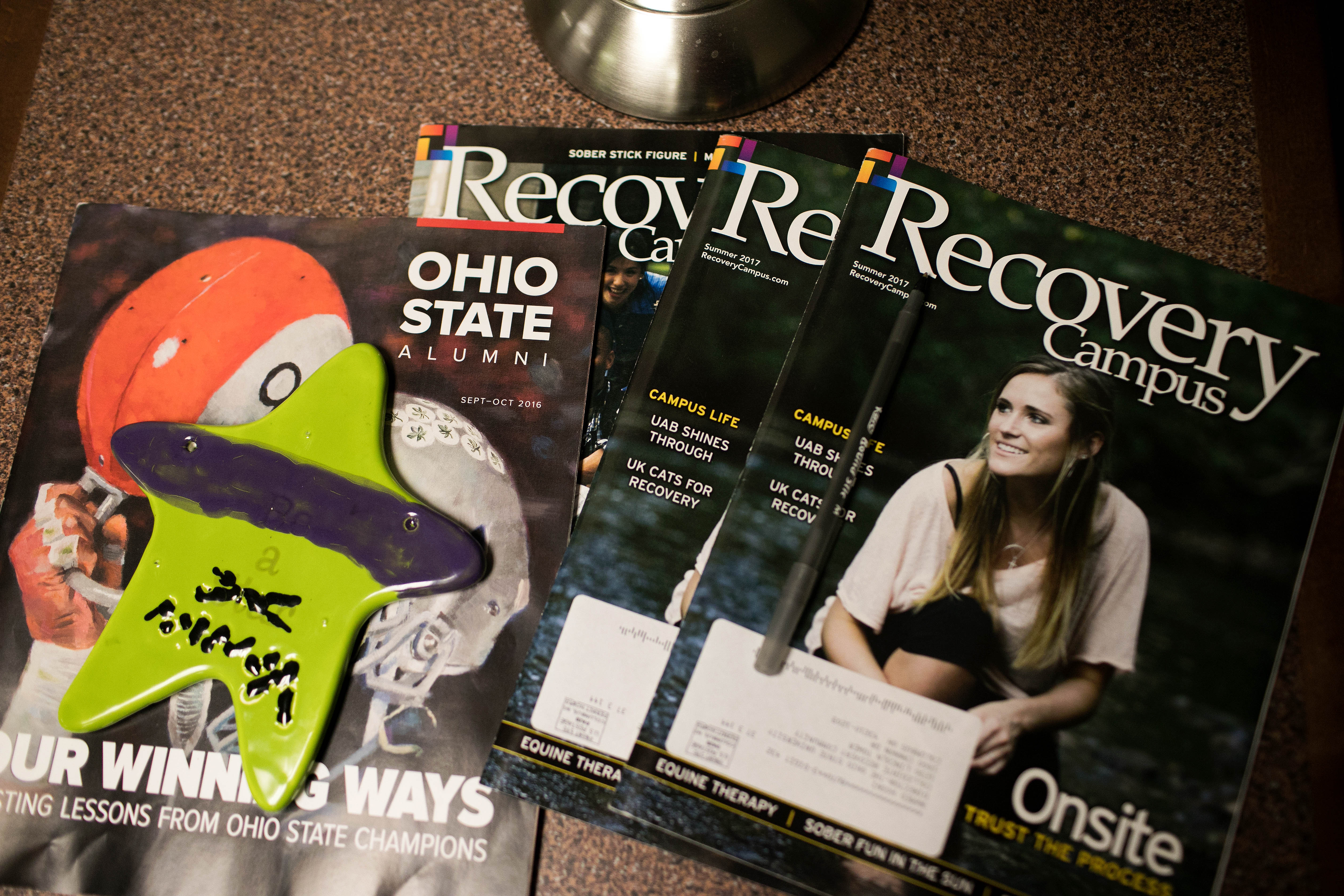
When Tim Rabolt first stepped foot on George Washington University’s campus as a freshman in 2011, he’d assumed that such a large university would already have resources set up for students in recovery. He got hooked on prescription opioids after he got his wisdom teeth out at 15 and his dentist prescribed him what he called “an insane amount of pills.”
Rabolt’s assumption was wrong — instead, officials seemed caught off guard by his questions about recovery, as if no one had ever asked about it before.
“It was really just hard to believe,” said Rabolt, who got sober during his senior year of high school. “It’s not like they’ve never encountered addiction and alcoholism of students. They’d have to be blind not to see that, with the amount of partying that’s done in college and all the stress factors and everything.”
(Peter Konwerski, the school’s dean of student affairs, said GW has always offered services that students in recovery could use, such as counseling, but acknowledged, “As a university, we have come a long way and we’ve been much more open to being much more public and very vocal about addiction.”)
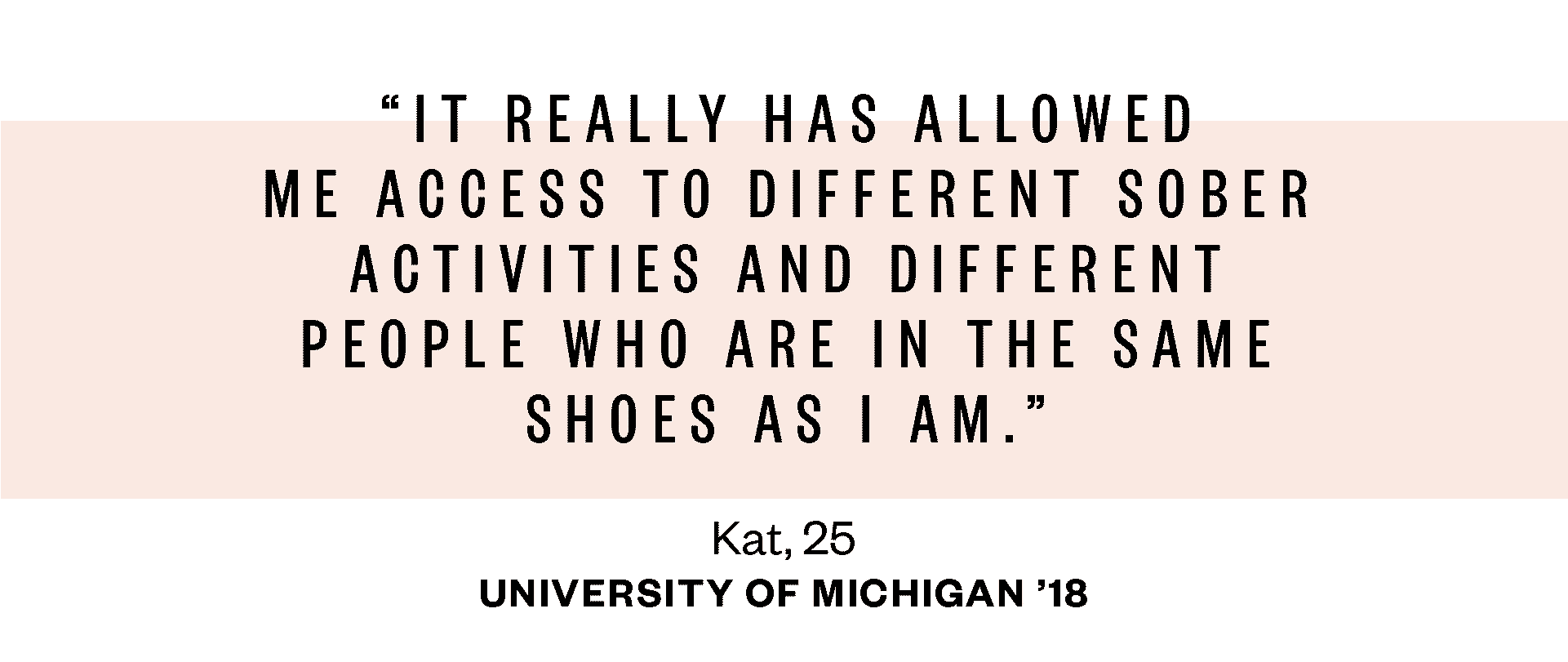
As he spiraled into depression and suicidal thoughts, Rabolt started leaving campus almost every day to attend support group meetings. At last, in the spring semester of his freshman year, a GW official set up an on-campus meeting for students in recovery.
“It felt like the final piece of the puzzle,” Rabolt recalled. “I finally had something like every week to look forward to. I could talk to them about classes and registering for courses or final exams. Everyone was in the same boat. … [I] felt a part of something, instead of apart from.”
Mandy, a University of Michigan senior who asked us not to use her last name, said she left campus during her sophomore year in 2014 to get sober from her addiction to alcohol. Shortly after she came back to school, she broke down in tears in a friend’s car.
“It was the fall, I had just moved back, and I was like, ‘I don’t know how I’m gonna do this, how I’m gonna stay sober, how I’m going to get through college and graduate and turn 21 and stay sober,’” Mandy, 22, recalled. She joined the school’s collegiate recovery program, which typically serves about 25 to 30 students, where she says she finally made friends outside of partying. “Somehow — just taking it one day at a time and with all the support of the people there — I was able to.”
Treating the problem
Collegiate recovery advocates attribute their field’s recent growth to a number of factors. One is the response to the opioid epidemic, which has helped reframe addiction as a public health issue instead of an individual moral failing. Another is Transforming Youth Recovery — started by a woman whose son died of an opioid-linked overdose — which, since 2013, has given out $10,000 seed grants to about 140 schools. Texas Tech University, a leader in the field, has also created a detailed blueprint to help other schools that want to replicate its collegiate recovery community.
And students in recovery who once took advantage of on-campus support are now graduating — and feeling compelled to start their own programs. Rabolt, for example, helped convince George Washington University to start an official collegiate recovery program before he graduated with a master’s degree in 2017. Today, he works as a consultant with the Association for Recovery in Higher Education, the field’s main advocacy and support organization. It counts 100 schools as members.
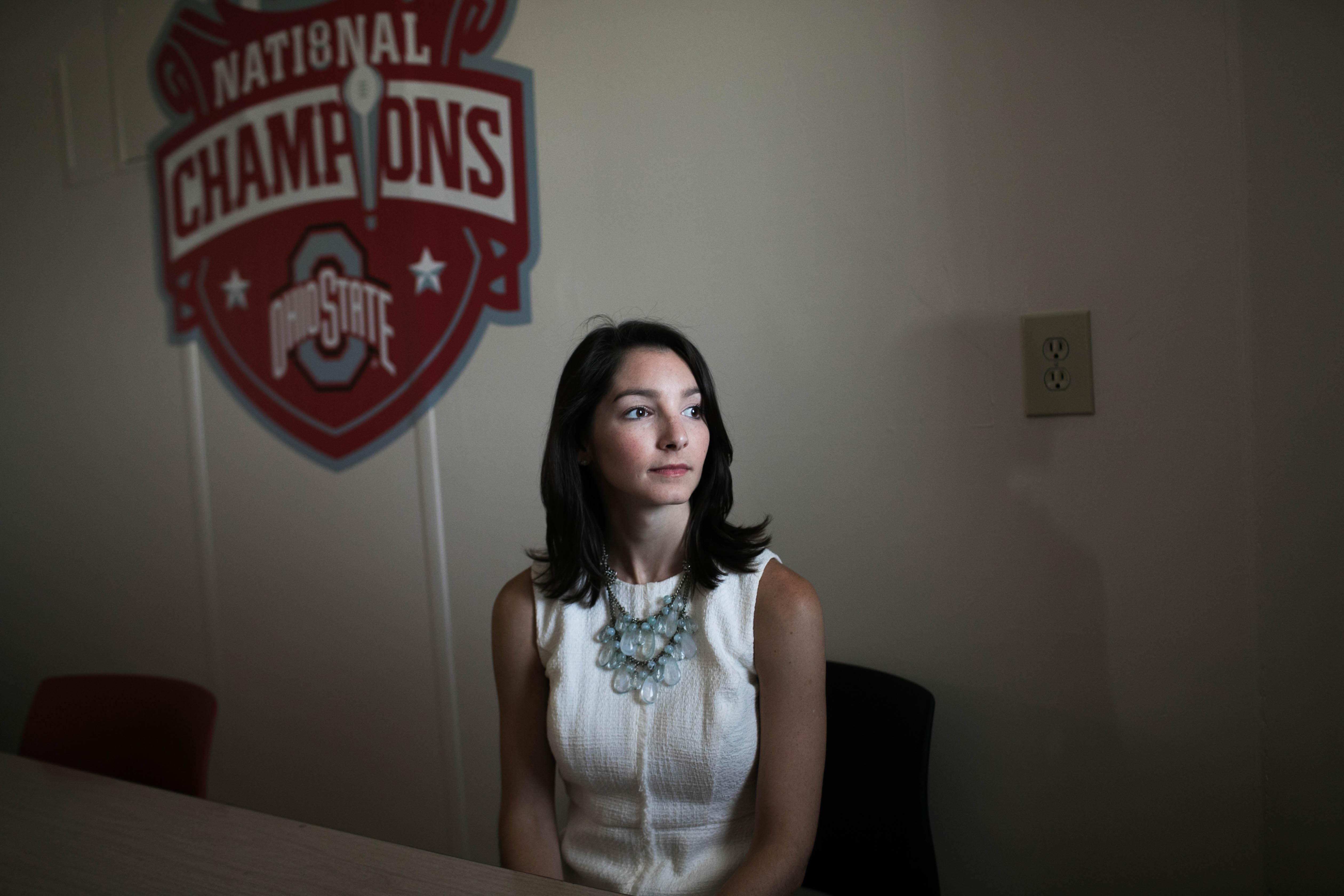
“You began to have this younger generation that was no longer accepting of the idea of staying in basement meetings, so to speak, but was coming out and talking about what it meant to be in recovery,” Hart, the consultant, said. “[They] were flat-out tired of their friends dying.”
For a month after he relapsed, Delaveris skipped the weekly support group meeting at Ohio State’s Collegiate Recovery Community out of embarrassment. When he returned, he initially revealed what had happened, but as he continued to use, he skirted actually lying to fellow members by keeping the details of his days vague. Growing up in Columbus, he had always dreamed of graduating as a Buckeye, and he was just a few months shy of his B.A. in psychology. He made a bargain with himself: He’d get treatment once he graduated.
After painkillers became too expensive for his dwindling savings, he started using heroin again. Eventually, he was using some kind of opiate every day.
In April, Delaveris went to dinner with his mom, who asked how he was doing. He couldn’t answer honestly. “I was just lying, just lying through my teeth, because I was dying inside, but I just have too much pride to say it,” Delaveris said. “The next day, I just woke up and couldn’t stop crying. It hurt so bad.”
He realized then that there was no way he’d make it to graduation without help. So he called Sarah Nerad, then the manager of the Collegiate Recovery Community. “‘We got you,’ is basically what she said,” Delaveris recalled. Within two days, he was in a Columbus in-patient treatment facility.
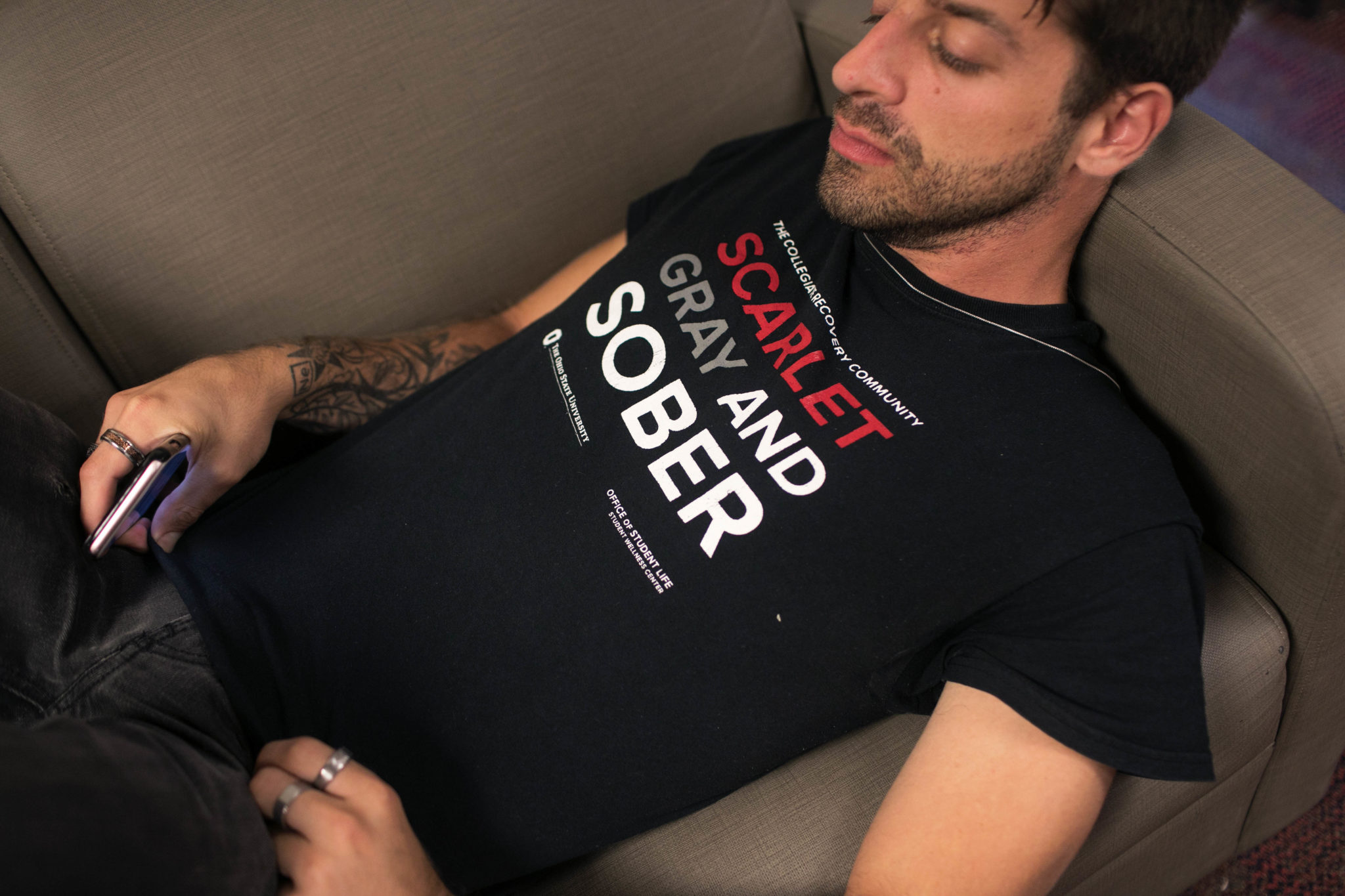
Ohio State’s Collegiate Recovery Community began in March 2013, after a student emailed administrators with pleas to help people in recovery. Today, it occupies a multi-room suite on the 12th floor of a tower overlooking the river that cuts through campus. There’s ’80s board games, foosball, free printing — a luxury on college campuses — and whole rooms devoted to meditation and watching television. Visiting members splay across the couches and put their feet on cushions with easy familiarity. With its fluorescent lighting and standard-issue dorm-room carpeting, the suite could be mistaken for any other student club’s meeting space.
The CRC has expanded rapidly, especially for the otherwise slow-moving world of academia, and now counts between 25 and 30 active members, including Delaveris. Like most collegiate recovery programs, it provides individualized help, support group meetings, and social outings like sober tailgates. It also created “Recovery House,” a dorm whose occupants must refrain from using drugs or alcohol on its premises, and spearheaded an initiative requiring Ohio State’s pharmacy and campus police to carry the anti-overdose drug naloxone. (Campus police told VICE News they haven’t had to use it yet.) Its “Recovery Ally” training, to fight stigma and help staff and faculty better understand substance use disorder and recovery, is also poised to become an industry standard.
“If we change the mentality of focusing on numbers and we start looking at these people as people again, we’re moving in the right direction,” said Rob Schilder, a 25-year-old senior at Ohio State University who belongs to the CRC (he’s recovering from opioids) and works there as a student assistant. “We service 25 to 30 students a semester who are in recovery, and at a school this large that may not sound like a lot. But that’s 30 people whose moms can sleep at night.”
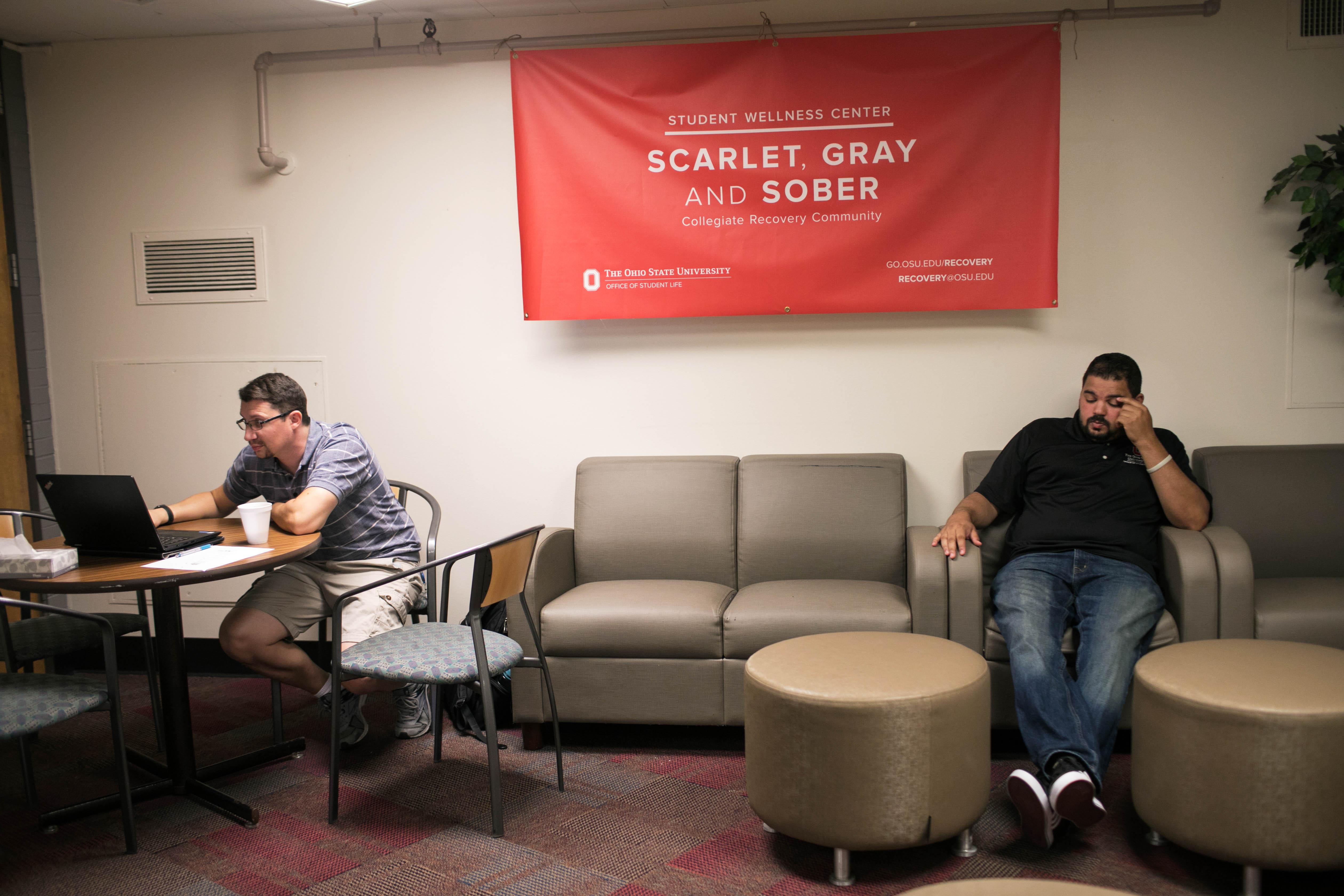
Making it stick
Most collegiate recovery groups encourage members to abstain from using any substance. But that may begin to change in the next few years, supporters say, as the opioid crisis likely worsens and more evidence of the effectiveness of medication-assisted treatment emerges.
“There’s no reason why a self-help kind of program couldn’t be combined with an approach that is accepting of medication,” Saloner said. “The 12-step community” — which includes groups like Narcotics Anonymous — “is a little bit divided on this issue right now, so there’s still a lot of shunning of people who are on methadone or buprenorphine and want 12-step help, but there’s value in having peers who support you. There’s especially value in having that support network when you’re going through the college experience.”
Ohio State is one of the very few schools to create a medically-assisted treatment program. Students had complained about struggling to get to off-campus treatment between classes and without cars.
“We don’t ever want someone to have to make a choice between going to class and getting treatment,” said Gladys Gibbs, a physician and the head of Student Health Services, whose department helps oversee the MAT program. “We’re probably in a better position on campus to work around their schedules and be convenient to access.
“Our ultimate goal is abstinence,” Gibbs added, “but you have to take people where they are and not where you’d necessarily like them to be, in order to get them there.”
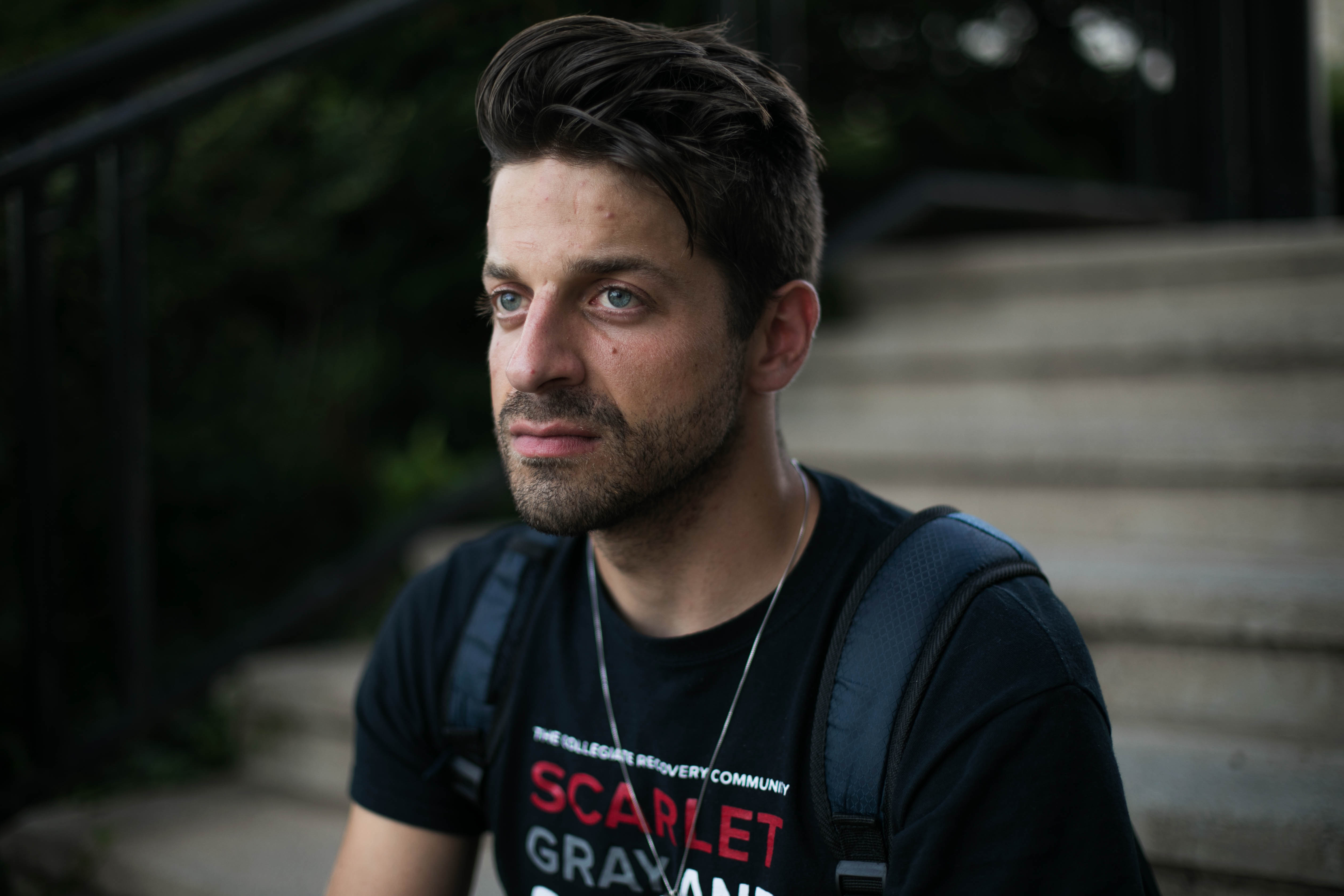
Since collegiate recovery programs and communities are still rare, there’s little research on their outcomes. But the available data indicates that even the abstinence-first models are effective at keeping students sober and in school.
The only nationwide survey of students in collegiate recovery programs, which was published in 2015 and looked at 29 schools, found that, on average, just 8 percent of students who’d been in recovery for about three years relapsed each year. Generally, people with substance use disorders must be in recovery for at least five years before their chances of relapse dip below 15 percent. It also found that students in collegiate recovery programs tend to have higher grade-point averages and graduation rates than other students at their schools.
Kitty Harris, who led Texas Tech’s collegiate recovery program for 12 years, says that’s likely because, after being written off as drug-addicted “losers,” students finally feel like they’re the type of people who can succeed.
“A lot of the students we’ve had through the years have been kicked out of other universities because of their grades or behavior,” she said. “A lot of these students feel like they’ve gotten a second chance.”
Since Delaveris got treatment in April, he says he’s had a good day pretty much every day. When he wakes up, he prays and meditates, and he takes Prozac to treat the longtime depression he’s been diagnosed with. During the school year, when Delaveris had a spare hour, he’d talk to his sponsor or head to one of the hundreds of support group meetings located around Columbus. He now goes to between one and three meetings a day; recovery is his primary extracurricular.
“I probably wouldn’t be alive” without the CRC, he said. “I know that’s a really bold statement, but the way things were headed, I probably wouldn’t be.”
Delaveris is now five months sober. He graduated in August.
Carter Sherman is a reporter for VICE News.
Need help with opioid addiction? Find a treatment center near you or find a doctor in your area who offers medication-assisted treatment.






